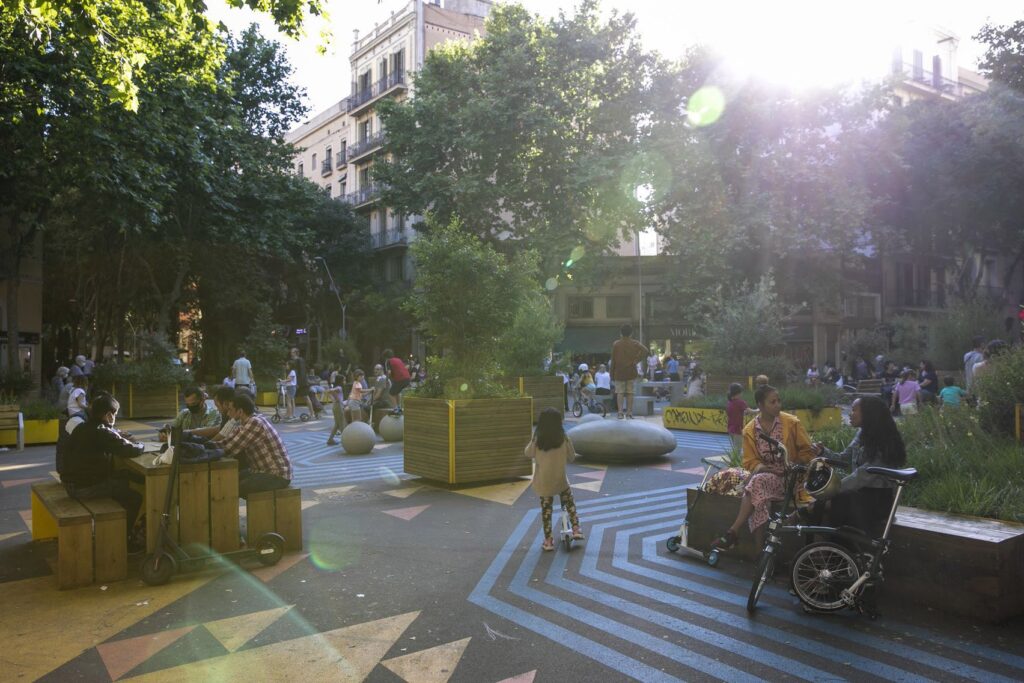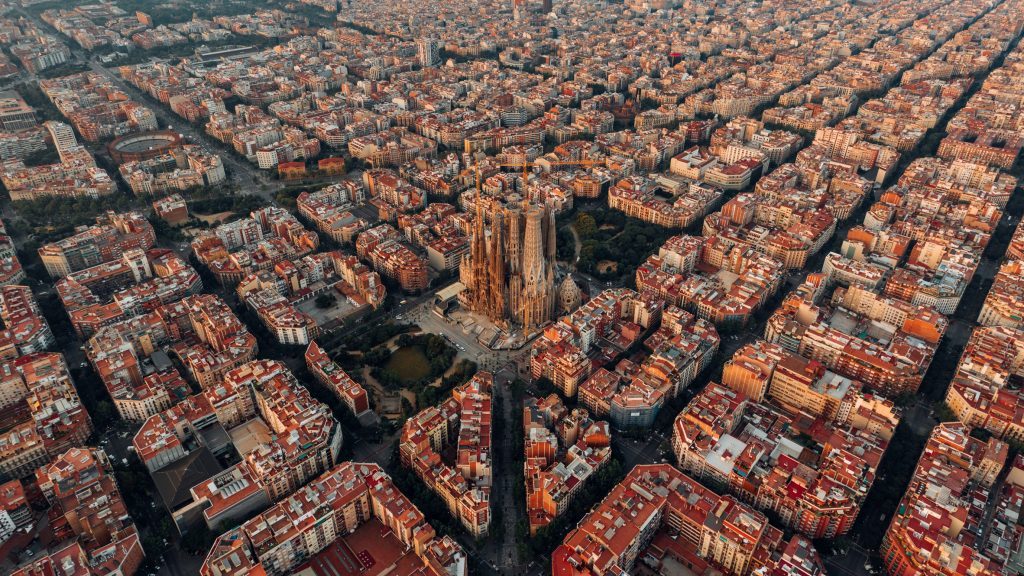Il Barcelona city council has announced its plans to transform one in three streets in its Eixample neighborhood into green, car-free public spaces to tackle air pollution.
According to the project, each of the 21 streets with related intersections will be converted into a green and pedestrian street. The streets will become small parks and public squares, creating 33,4 hectares of land "where pedestrians and clean air are protagonists".

The transformation will be radical, and for this reason it will take 10 years. The project of a historic center that becomes a park is an attempt to curb excessive pollution in the Catalan capital. The green and pedestrian street is a healthier, safer and more sustainable place to live.
In one word: Eixample
The Barcelona City Council's masterplan focuses on the streets of the Eixample, the network of streets surrounding the medieval heart of Barcelona. Roads that were traced when the city had to extend beyond its fortified center.
Eixample, with its distinctive octagonal blocks separated by wide avenues, was developed by urban planner Ildefons Cerdà in the 19th century. Even at the time, the goal was for a place where every street would be green and pedestrian-friendly. No horses, no cars. It didn't happen that way.
According to the municipality, this area has priority for transformation because it has a very high potential impact on the rest of the city. High population density and high levels of traffic and pollution.
“In the current context, this vast area of the city is once again an excellent opportunity to recover this spirit of urban transformation and update the Cerdà plan in the 21st century.”

The scheme will be part of the larger Superillas master plan
The scheme is an extension of the “Superblocks” masterplan established in 2016 and also common to cities such as Madrid.
The Superillas, or superblocks, are areas designed to reduce traffic and maximize public space, addressing the city's chronic pollution problem. A superblock is more than just a green, pedestrian-friendly street.
So far there are six Superillas, which according to the council have led to a reduction of up to 33% in levels of harmful nitrogen dioxide, a gas that is formed from car emissions.
One in three green roads. Cyclopean metamorphosis
The goal of Eixample is to transform each of the streets in the plan into a small park. In addition to the 21 new squares that will be created from road intersections, all premises in the area will receive outdoor space within a 200 meter radius.
To compensate for the reduction in road access, the municipal administration said that access to public transport "will be guaranteed" throughout the area.
Work on the project is expected to begin in 2022, starting with the transformation of eight sites.
The Barcelona City Council's plan is the latest in a series of initiatives in cities around the world to counter automotive hegemony and maximize green space. I talked to you a few months ago about Seattle extraordinary project, with its 32 kilometers of green and pedestrianized road.
In 2019, Paris revealed plans for an "urban forest" planting scheme, which will see trees and gardens introduced alongside four historic sites.


